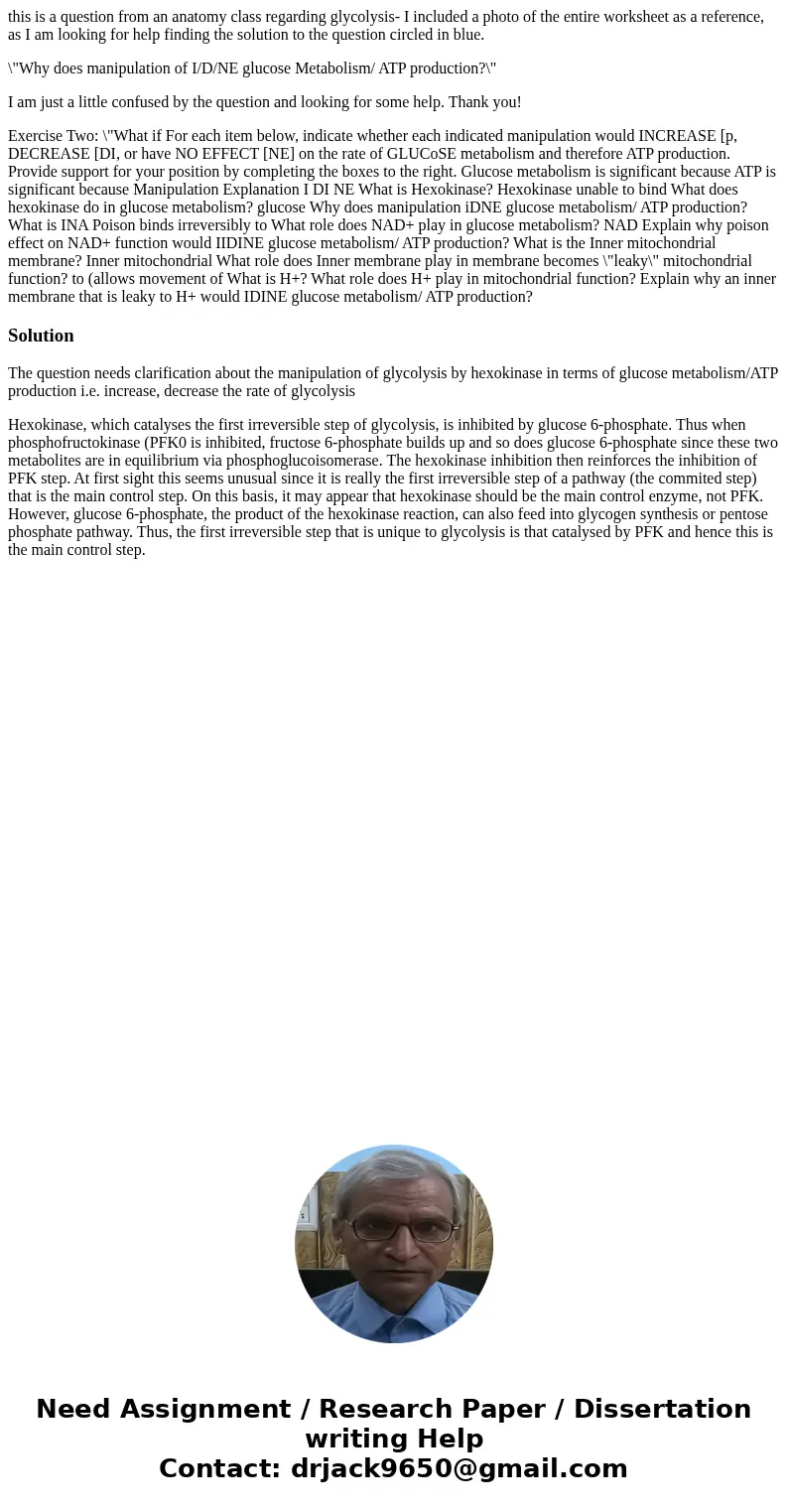this is a question from an anatomy class regarding glycolysi
this is a question from an anatomy class regarding glycolysis- I included a photo of the entire worksheet as a reference, as I am looking for help finding the solution to the question circled in blue.
\"Why does manipulation of I/D/NE glucose Metabolism/ ATP production?\"
I am just a little confused by the question and looking for some help. Thank you!
Exercise Two: \"What if For each item below, indicate whether each indicated manipulation would INCREASE [p, DECREASE [DI, or have NO EFFECT [NE] on the rate of GLUCoSE metabolism and therefore ATP production. Provide support for your position by completing the boxes to the right. Glucose metabolism is significant because ATP is significant because Manipulation Explanation I DI NE What is Hexokinase? Hexokinase unable to bind What does hexokinase do in glucose metabolism? glucose Why does manipulation iDNE glucose metabolism/ ATP production? What is INA Poison binds irreversibly to What role does NAD+ play in glucose metabolism? NAD Explain why poison effect on NAD+ function would IIDINE glucose metabolism/ ATP production? What is the Inner mitochondrial membrane? Inner mitochondrial What role does Inner membrane play in membrane becomes \"leaky\" mitochondrial function? to (allows movement of What is H+? What role does H+ play in mitochondrial function? Explain why an inner membrane that is leaky to H+ would IDINE glucose metabolism/ ATP production?Solution
The question needs clarification about the manipulation of glycolysis by hexokinase in terms of glucose metabolism/ATP production i.e. increase, decrease the rate of glycolysis
Hexokinase, which catalyses the first irreversible step of glycolysis, is inhibited by glucose 6-phosphate. Thus when phosphofructokinase (PFK0 is inhibited, fructose 6-phosphate builds up and so does glucose 6-phosphate since these two metabolites are in equilibrium via phosphoglucoisomerase. The hexokinase inhibition then reinforces the inhibition of PFK step. At first sight this seems unusual since it is really the first irreversible step of a pathway (the commited step) that is the main control step. On this basis, it may appear that hexokinase should be the main control enzyme, not PFK. However, glucose 6-phosphate, the product of the hexokinase reaction, can also feed into glycogen synthesis or pentose phosphate pathway. Thus, the first irreversible step that is unique to glycolysis is that catalysed by PFK and hence this is the main control step.

 Homework Sourse
Homework Sourse